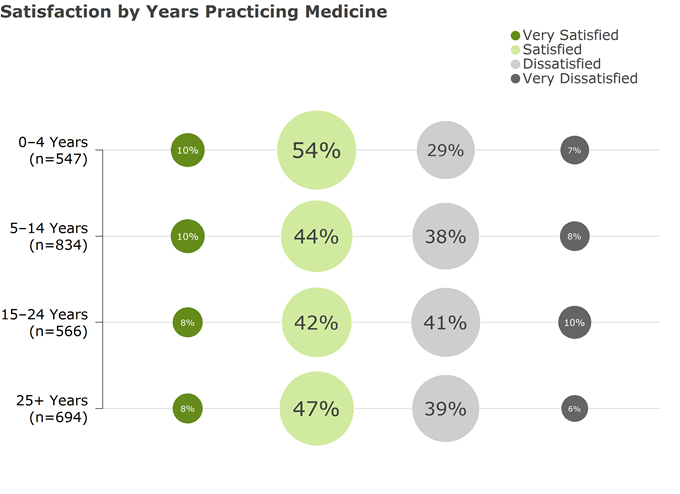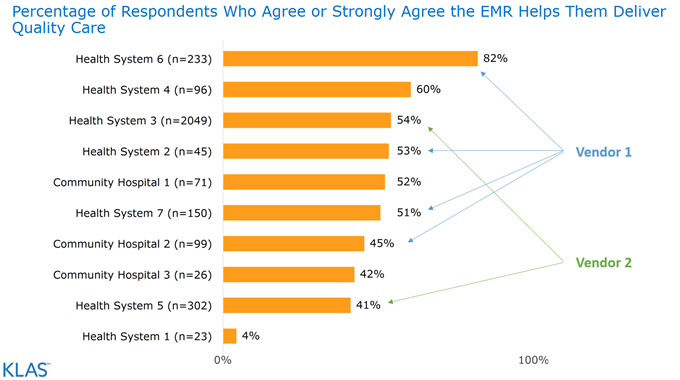
The Red Herrings of EHR Satisfaction
When we first began digging into the data we’ve gathered during our EHR Improvement Collaborative, we were armed with a lot of assumptions and “common knowledge” about the industry. Luckily, at KLAS one of our favorite things to do is watch solid research bust the myths we thought were true. Today, I’d love to take a dive into some of the red herrings of EHR satisfaction and shine some light from our data on what’s really going on.
EHR Satisfaction by Age
One of the most common hypotheses that KLAS hears on the phone is that it is “the older physicians who will never be happy with anything.”
Myth busted. The data actually seems to indicate that dissatisfaction levels remain fairly constant when we segment practitioners out by age group:

Changing Vendors
Another big misconception surrounding EMR satisfaction sits with the providers who often feel as though the grass is greener on the other side. Often in our conversations we talk to providers who claim, “If we could just afford to move to such-and-such vendor, then our end-user adoption and satisfaction problems would evaporate.”
The truth? It is increasingly clear that a provider organization can be unsuccessful on any EMR. At the same time, KLAS is starting to learn some crucial differences that point to a greater likelihood that, yes, some EMR solutions are better designed. While an EMR change could help, it will not make up for a poor implementation or user culture. In many ways EMR satisfaction has less to do with the grass being greener on the other side and more to do with learning how to correctly landscape your side, so to speak.

What Actually Matters
So, what does make the difference? The consistently statistically significant drivers of EMR satisfaction together tell a compelling story of the dangers of treating an EMR like a one-size-fits-all tool. Clinician background (MD/resident/NP/PA/RN/other), clinical specialty, and the user’s level of personalization are all significant predictors of EMR satisfaction. These factors point to the common theme that medicine is practiced differently by various caregiver positions, by specialties, and even among different clinicians of the same specialty and position—stemming from differences in clinical training and background. When a one-size-fits-all EMR solution forces clinicians into common workflows, clinicians often feel unsure and inefficient, fighting with the EMR to still work in their customized way.
While a level of variation in clinical care is clearly an enemy to the field of medicine, other variation is positive and needed—such as the differences in workflows between an obstetrician and an ENT.
Supporting positive variation in medicine is the responsibility of all EMR stakeholders. EMR vendors must produce functionality that is personalizable to the needs of different caregivers. IT organizations must find a way to train different users on how to personalize and utilize the EMR according to their needs. Users also need to be patient and diligent in understanding that part of their responsibility is making the EMR work for their specific needs.
The Arch Collaborative
Our EHR Improvement Collaborative is still a fairly new initiative for KLAS, but already the insights we’re uncovering have proven invaluable for some of the organizations we’re working with. Yet, the whole point of calling this a collaborative is that we intend to collaborate! Our hope is that, if you think your organization could benefit from insights like these, you’d reach out to KLAS to find out how your organization can participate.